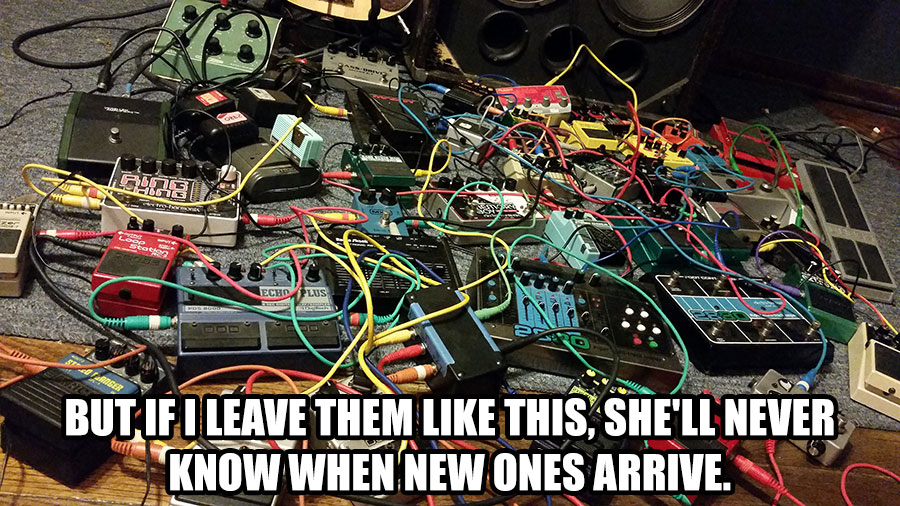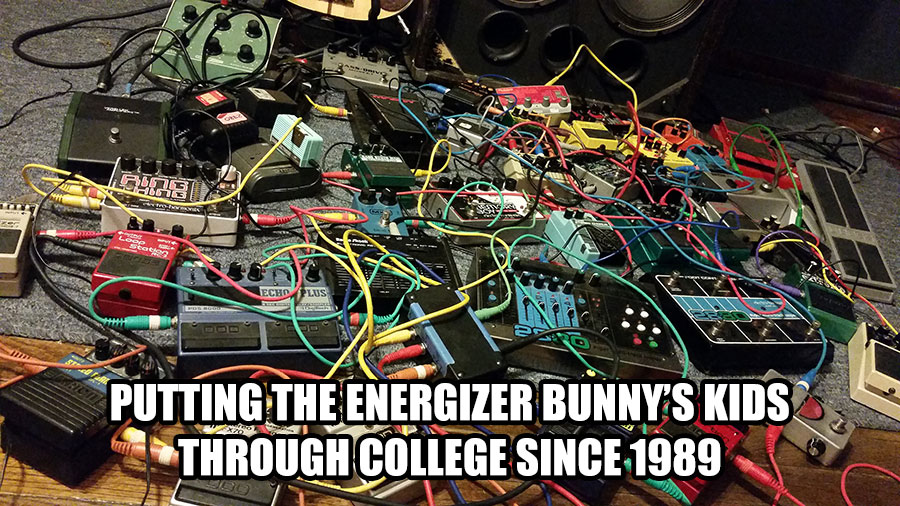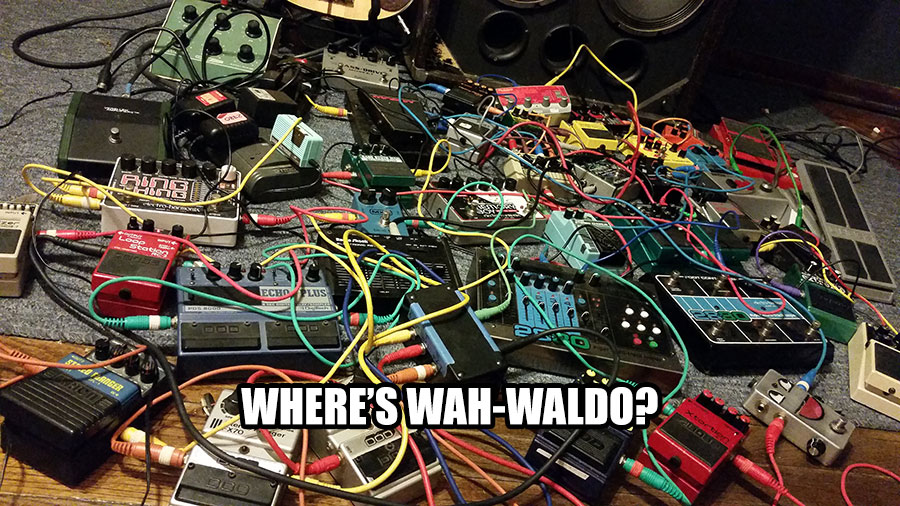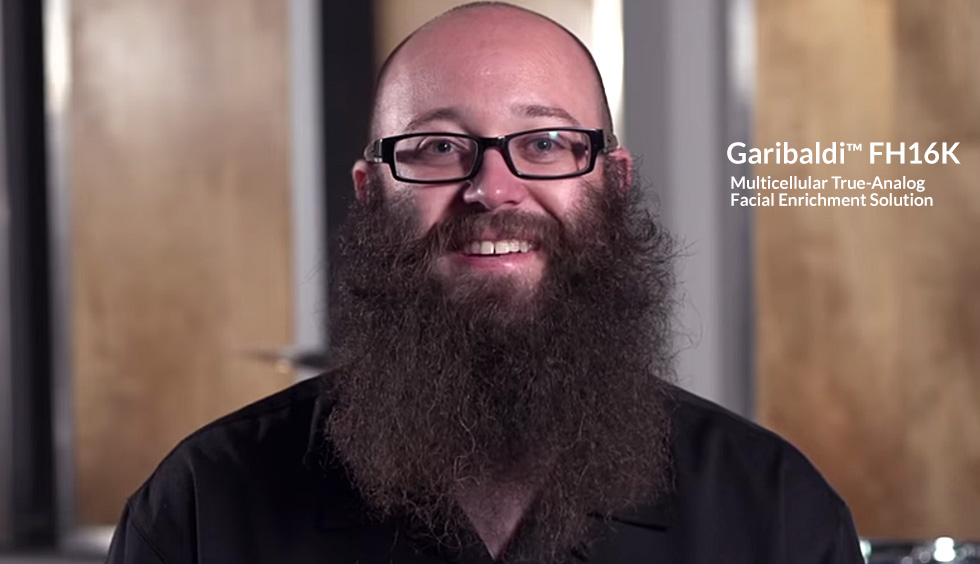Category Archives: Just for Fun
Announcing the Winners of the BIAS FX Caption Contest
When announcing the winners of a contest, it’s customary for someone in my position to say something to the effect of “choosing a winner was hard.” That was less the case with our BIAS FX Caption Contest—the winners here really stood out from the rest of the pack, and each member on our highly-qualified panel of humorists laughed with equal aplomb at the Grand Prize Winner. But first, the runner-ups.
The following two captions deservedly win an AudioBox iOne Interface, Studio One 3 Artist, Progression 3, and BIAS FX for iPad.
First, there’s this funny, down-to-Earth, and frankly quite relatable gem from Timothy L.:
Next up, from Matt C., should probably win some sort of Dennis Miller bonus award for its left-field reference. Plus, when you look at the age of most of the pedals in the shot, his choice of “1989” is kinda dead-on.
The Grand Prize winner below was submitted by Jeff K. When you consider the letter-to-humor ratio here, you’ve got one of the most efficient funny captions in the history of such contests. Jeff wins the big ol’ prize batch of Studio One 3 Professional, Progression 3, an AudioBox iOne Interface, BIAS Amp Pro, and BIAS FX for iPad.
Congrats and thanks to all for participating—we’ll be e-mailing the winners ASAP.
FAQ for Ray’s Beard
With the arrival of the StudioLive RM-series rackmount mixers, we’ve received a lot of questions about the functionality. 96K? Can they be cascaded? What about the Dante cards? When can I get one?
We’ve answered those questions (and more) in the RM-series mixer FAQ, which can be had by clicking here. But we’ve also gotten a lot of other questions that we feel are worthy of their own FAQ—particularly regarding Ray’s beard. While we understand and appreciate your curiosity, we have had to keep some secrets for a while for competitive reasons—but, the cat is out of the bag and we can go public with the announcement of the Garibaldi FH16K. Read below for more info.
Ray’s Beard FAQ
The Garibaldi FH16K is a true-analog face-mountable beard that allows for maintaining facial warmth in the coming winter months, as well as unsurpassed soup and juice filtering. Beta testers of the Garibaldi have reported up to a 30% increase in their dates-per-week ratio shortly after concluding installation. Garibaldi is compatible with all walks of life, and enjoys cross-fashion compatibility with both corduroys and flannel.
While currently only compatible with human males over the age of 14, we plan to broaden availability to women and younger users through a hormone therapy add-on kit available in Q3 2015. At the time of this writing we have no plans to make the beard available to Androids.
- Q: Is the Garibaldi FH16K difficult to maintain?
- A: Not really, but carrying the weight of the beard consumes approximately 200 calories daily.
- Q: Does UC Surface contain a beard Channel Type preset?

- A: Yes. It was released as part of the most recent UC Surface update, which can be downloaded by clicking here. It is accessed from the Channel Info menu.
- Q: Any affiliation to the cast of Duck Dynasty?
- A: No. Ray is from the Northwest.
- Q: Ray has more hair on the bottom half of his head than the top half. That’s weird.
- A: This is not a question.
- Q: MIDI implementation?
- A: Not available at this time.
- Q: When does it ship?
- A: The Garibaldi FH16K is available to begin growing immediately, with full installation concluding in 2-3 years.
- Q: What networking options exist?
- A: There is no Dante option planned, as Dante Alighieri (the great Italian poet who wrote the Divine Comedy) was clean-shaven. AVBeard is being considered.
- Q: What customization options exist?
- A: At the time of this writing, the Garibaldi FH16K grows to the default Grizzly Adams setting pictured above. We will be introducing the FuzzTrim QT expansion in Q2 2015, allowing for stored presets including the Goatee, Neckbeard (AKA “The Linux”), Mutton Chop, Fu Manchu, and Gandalf.*
*Gandalf has not yet tested for compatibility with OSX Mordor, please wait before updating your OS
Tech Specs:
|
||||||||||||||||||||||||||||||||||||||||||||||||||||||||||
Fonz Wins an RC-500 at Potluck Recording Conference
 [This just in from Fonz, who recently lucked out and took home a PreSonus RC 500 from the Potluck Recording Conference (formerly Tape Op Con) giveaway! We’ve had a little hand in Potluck since 2004 or so, and this year a lucky winner got an RC 500!]
[This just in from Fonz, who recently lucked out and took home a PreSonus RC 500 from the Potluck Recording Conference (formerly Tape Op Con) giveaway! We’ve had a little hand in Potluck since 2004 or so, and this year a lucky winner got an RC 500!]
Lady Gaga’s “Poker Face,” Metal Version
Another solid gold cover from the StudioLive fans over at Frog Leap Studios, who maintain a consistently high rate of quality, creative output. Thanks guys!
WHA DAT?
Spotted this on Peter’s desk. In Baton Rouge, team spirit knows no bounds, but we had to draw the line the last time Rick showed up in full purple and gold body paint. We told him that we sent him home for a shower, but fact is it was really posed a significant health risk.
#ThrowbackThursday : Editing in Popular Music

An interesting bit of recording industry foreshadowing, discovered in a thrift store by our own Carl Jacobson!
This pic is snapped from the back of 1963’s “Dave Brubeck Live at Carnegie Hall.” Tape splicing to edit a performance may seem downright quaint by today’s standards, but this raises a great discussion.
What would Teo Macero say about today’s editing practices in music?
And when it comes to editing a performance, where do you draw the line—if at all? What will you NOT do?
“Steel” Drums
Here’s a great video covering the soundtrack production for “Man of Steel,” the latest cinematic adventures of DC’s Big Blue Boy Scout.
If you’ve ever tried to get just the right drummer for your project/band, this video may well make you cry, as Hans Zimmer gets to use Matt Chamberlain, Sheila E., Josh Freeze, Pharell Williams, Danny Carey, John JR Robinson, Jason Bonham, Satnam Ramgotra, Toss Panos, Jim Keltner, and more—simultaneously.
Once you’ve recovered from geeking out over a dozen of the world’s best session drummers all working together in the same room, take a closer look at the studio setup for this. The group performs on twelve risers arranged in a circle, with all individual drums miked, plus overheads, plus room mics. The result is a thunderous surround-sound mix of drum bangin’ that puts the listener in the middle of what must have been the world’s greatest drum circle.
New Photos from Camp Jam in Atlanta!
[This just in from Steve Freeman, National Director of Camp Jam, far and away the rockinest summer camp that kids have ever known. A great guy, and a great organization that we are proud to have a hand in.]
These kids are growing up right, using Studio One and the StudioLive mixers to learn recording and mixing. The StudioLive 16.4.2 is being used to mix and record performances from both the campers and visiting artists! Studio One Artist continues to be the DAW format for our recording/songwriting class.
The features and simplicity of StudioLive and Studio One have our camps running smoothly, and make a real difference in the sound of the recordings and performances. Campers are all being given a PreSonus code to download Studio One Artist. We could not be happier with PreSonus and their efforts to support Camp Jam and music education!
THANKS TO ALL OF YOU. YOU ARE INCREDIBLE! These are pictures from Atlanta—we will send from other cities as we move through the summer. If you’re interested in Camp Jam, please contact us, summer classes are filling up fast!
—
Sincerely,
Steve Freeman
National Director
Camp Jam, LLC
(800) 513-0930
Polyrhythms Demystified
Look, there’s no two ways around it—polyrhythms are HARD. Playing one beat at a time is difficult enough for some folks, but how about playing a three-count beat with your left hand and a simultaneous four-count beat on the right? Moving on to other time signatures, particularly in odd meter, doesn’t just add to the difficulty—it multiplies.
Until today, I had never before seen such a lucid, impressive, and concise demonstration of polyrhythms as robertinventor has assembled on his YouTube channel. His expertly-crafted visuals (created with his own software, Bounce Metronome) drive home the timing in a much more digestible manner than the best drummer you know may be capable of. All of these videos begin at a slow tempo and gradually accelerate. Play along!
The playlist embedded above has some of the more rudimentary demonstrations robertinventor offers. Once you’ve picked your jaw up off the floor and are ready to move forward, I strongly recommend checking out the rest of his channel for a look at more advanced, esoteric polyrhythmic concepts, including syncopated harmonic polyrhythms, sonified pendulum waves, and my personal favorite, the Inharmonic “Golden Rhythmicon” Fibonacci Sequence.
Jeff Blackwell Archives Music History with his StudioLive

[Jeff Blackwell is the lucky guy who was recently bestowed an incredible collection of lost recordings from the Old South Jamboree from 1973 to 1976.The recordings include performances from many local Louisiana acts of the era, but the Old South Jamboree’s roster also included true luminaries of country music, including: George Jones, Buck Owens, Loretta Lynn, Dolly Parton, Ernest Tubb, and Porter Wagoner. Jeff took on the daunting task of archiving these 16 reels of history to the digital world, and his PreSonus StudioLive 16.4.2 had a hand in it! I called Jeff and got the word from the horse’s mouth on this once-in-a-lifetime story. WBRZ recently aired a piece on this tale as well, embedded below—note StudioLive front-and-center in the video—but I HAD to talk to Jeff about some of the nittier, grittier details of this fascinating project.]
Hey Jeff! First, can I get some background on yourself and your work in audio?
Jeff: “I was a DJ at WYNK-FM back in the day—they are still on the air today. Back then, we used to sign on at 5 a.m. and sign off at midnight, it wasn’t a 24-hour station. We’d turn the transmitter on every morning before the show. They would pay me 45 cents an hour plus all the records I could eat!”
How did you come across the tapes?
Jeff: “Well, Going back in time… back in the 70s, WYNK would broadcast the shows from the Old South Jamboree every Saturday night. There were a few shows like that back in the day, like Louisana Hayride, which goes back to the 50s. That’s where Elvis Presley, Carl Perkins, all the old greats got their start to the music biz. Anyhow, another guy who worked at WYNK, Page Dew, knew a guy who had been recording these Old South Jamboree shows at home on a consumer reel-to-reel deck—a total of about sixteen reels.”

How was the condition and quality of the original recordings?
Jeff: “Well, most were quarter-track recorded at 1 7/8 ips. Doesn’t provide a heckuva lot of bandwidth! When quality is at stake, faster tape speed is preferred to create more bandwidth, but that didn’t happen here. Not only did I have limited bandwidth to work with, but these songs were recorded off the air from a mono FM radio broadcast. Next, add that the band was recorded with only three mics, and their signal was being transmitted by a Marti transmitter (used for remote broadcasts back in the day), sent to an FM station, and then recorded by a listener at home at only 1 7/8 ips!”
“So, It was a really challenge to get quality out of that source. But when you hear it, it puts you in a very different frame of mind. It takes a listener back to a different era, when one speaker getting music out of the air was enough, regardless of how it sounded! When I heard the first reel I was transported back in time.”
Any way we can track down the guy who provided the tapes? Are there any more?
Jeff: “He’s long gone. I talked to Page, who lives in Colorado, and asked him that. He said that this guy and these tapes are dated from early 1973 to 1976. He said it was an old listener, and apparently someone at the station gave him the reels to record these shows—tape was six or seven bucks per reel back then.”
What hardware did you use to transfer and restore the recordings?
Jeff: “I used the StudioLive 164.2’sEQ on these recordings because I really love the Fat Channel. I was first on the list when I heard the StudioLive was coming out. Once I got my hands on it I was like ‘Cool!’ It’s my main console, everything goes through it to get into the computer.”
“My wife found the reel-to-reel I used, a Pioneer quad, at a garage sale. Got it for 50 bucks. The material recorded at 1 7/8 ips would only play at 3 ¾ ips on this tape machine, so it was still twice as fast as real time. Of course I couldn’t EQ that, so I had to pitch it down in software and then run it through the StudioLive. There were 3 reels recorded at 7.5 ips that I could process through the StudioLive directly before taking it to software for fine-tuning, pitch correction, and noise reduction.”
Will the recordings be made publicly available? Or is releasing all these old songs form these artists a licensing nightmare?
Jeff: “Exactly. Contracts were looser back then. I gotta tell ya, over 90-95 percent of this music was performed by local artists. Some are way out of tune, some can’t hit notes, and of course the mix was awful by today’s standards. I need to be careful about the copyright issues. Several friends of mine have asked for copies, there were a couple of artists who were pretty popular in the day who are now gone, singing some of their hits.”

Thanks, Jeff. Anything else to add about the StudioLive?
Jeff: “I don’t use it as a typical recording or musician-guy. Most of my use has been for advertising and corporate events. I learned early on that if I was gonna work with bands, I had to work with no budgets and weird hours! I figured that wasn’t for me.”
“Since I’ve had the StudioLive, I’ve recorded Scott Innes, whose voice credits include Scooby Doo and Shaggy, who lives in Baton Rouge. I’ve also done quite a bit of work with Warner Bros. using the StudioLive.”
“Another thing I use it for is the Louisiana State Medical Society Annual House Delegates meeting. I use the StudioLive’s noise gates on their mics—it’s a big live room, and there’s a lot of interaction going on. So, I don’t have to worry about running gain on my mics. I love it. It has that finesse I need to mute a mic when not in use, but when the person starts talking it breaks the gate… good to go! I also rent a StudioLive 24.4.2 for the annual Acadian Ambulance Service Paramedic of the Year award program. More like a theatrical event with lots of wireless mics, skits and over 80 sound cues!”




